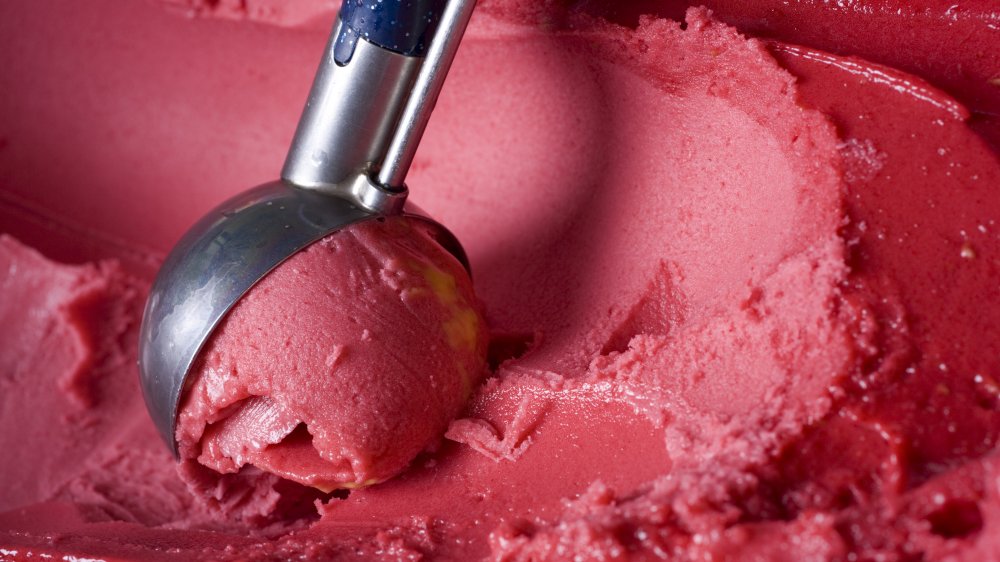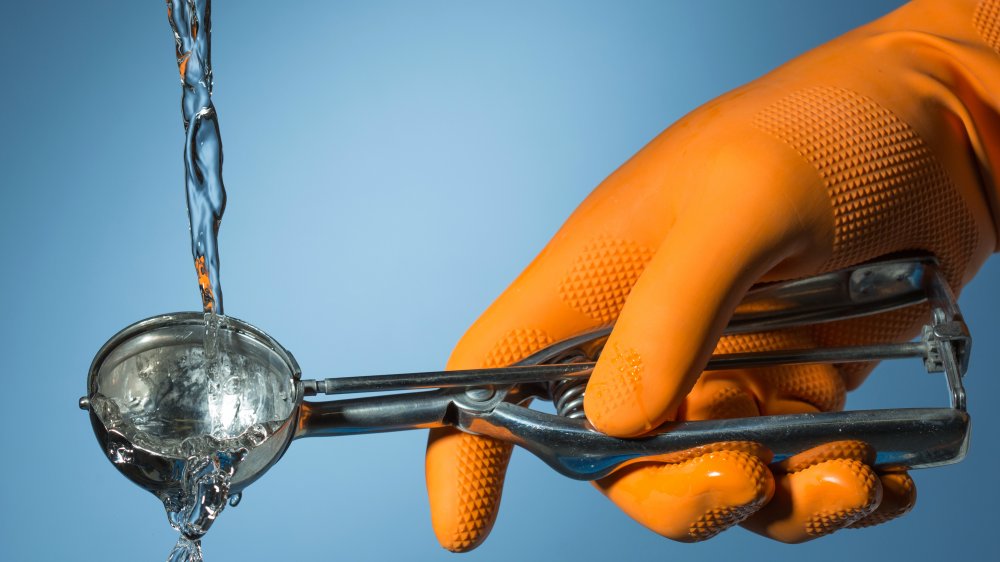The Big Mistake You Make When Scooping Ice Cream
All right, all of you ice cream aficionados. It turns out there is a right and wrong way to scoop ice cream, and chances are you are doing it all wrong. But don't worry; you're in good company. You're probably thinking, "What could be easier than scooping ice cream?" But as fate would have it, we can make a lot of mistakes when we open up a carton of our favorite cookies and cream ice cream or raspberry sorbet and prepare to scoop it.
Per the International Dairy Foods Association, Americans eat their way through 23 pounds of ice cream each year, and ice cream is the most popular of all frozen treats. With how much we eat and how much we love this dessert, you would think we would be experts at scooping it out. So, what are the mistakes we are making? And how are these user errors having an impact on our ice cream consumption?
Scooping ice cream correctly starts with the right tool. Jeni Britton Bauer, founder of Jeni's Splendid Ice Creams, told Eat This! Not That! she prefers the Zeroll scoop. As Bauer explained, "The handle is filled with a liquid that transfers heat from your hand to the aluminum scoop, which melts just a little bit of ice cream as you run it over the surface and cleanly releases the ice cream from the metal." Aside from tool choice, however, what's the biggest mistake we are making when we scoop ice cream?
Do not wet your scooper
First, you probably want to let your ice cream set out on the counter for 5-10 minutes before beginning to scoop. This allows the ice cream to soften and ensures you aren't trying to dig into something rock hard. Some people think microwaving their ice cream is the way to go when they are in a hurry, but don't. It will cause some serious issues with the texture of your favorite flavors, because you aren't softening the ice cream, you're melting it (via Insider). Another mistake that is even bigger? Running the scooper under warm water to heat it up. We've all done it, but the consequences of this method are more than any ice cream lover can take.
Bauer, again, explains: "A dry, room-temperature scooper is always the way to go. Using a wet scoop glazes ice cream with a thin layer of ice — and hot water will melt ice cream too much, causing ice crystals to form faster when you return the pint to your freezer." As Insider noted, you want your ice cream to glide as you dish it out, and when you use a room-temperature scooper, you are creating the perfect atmosphere for it to do just that. So the next time you are thinking about running your ice cream scooper under warm water, just say no. Your ice cream will thank you.

